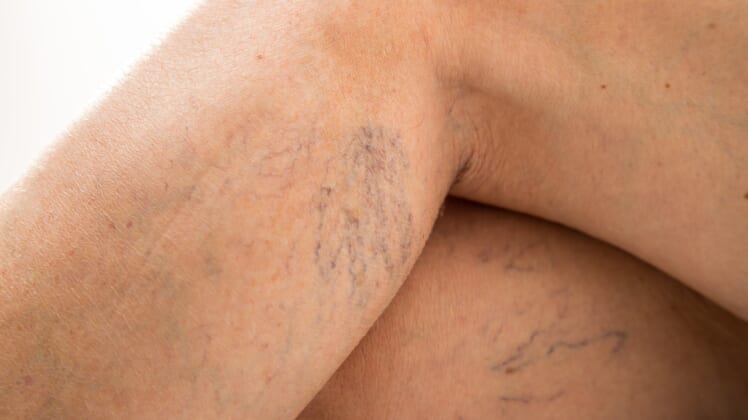
Do you have varicose veins? People have treated this somewhat unsightly problem for a long time simply for cosmetic reasons. But varicose veins can cause other underlying problems too.
In fact, a new study suggests that varicose veins might increase the risk of serious blood clots like deep vein thrombosis (DVT).
The study, published Tuesday in the Journal of the American Medical Association,1 used data on over 420,000 adults from the National Health Insurance in Taiwan.
During the study, researchers were looking at how often serious blood clots happened in those with varicose veins, an undertaking that other research hasn’t looked into.
For better accuracy, they excluded patients who had already experienced these types of problems.
Then, the researchers followed up with patients for as much as 7-8 years. What they found might just make experts take a second look at this problem.
Researchers found that patients who had varicose veins also had an increased risk for experiencing DVT. The results weren’t as clear for pulmonary embolism or peripheral artery disease. However, more research will be needed on this topic anyway.
What the research does bring to light is that varicose veins might not just be a cosmetic issue. Instead, they may signal a need for people to monitor them and use more preventative measures.
The big warning: take varicose veins seriously.
What to Know about Varicose Veins
Most people can spot varicose veins on themselves fairly quickly. They often look like twisted or gnarled blue veins that show up under the skin.
According to the National Heart, Lung, and Blood Institute,2 these veins are actually caused by weak or damaged valves inside the blood vessels. Normally, the valves will open to allow blood to circulate back to the heart, then close off to prevent it from flowing backward.
You can see what would happen if those veins were damaged, though – blood could easily pool in the legs. So how do they get that twisted, spidery look?
The National Heart, Lung, and Blood Institute mentions on its website how veins normally have some elastic-y stretch to them. As the blood pools back into the legs, the veins will stretch to accommodate, weakening their walls.
“If these walls become weak, they lose their normal elasticity. They become like an overstretched rubber band,” the website states.
Unfortunately, this stretching only makes the problem worse, separating the valves apart even further. Until now, however, doctors have deemed the problem harmless as far as medical problems go.
How to Treat Varicose Veins
Until research shows more about the seriousness of varicose veins, your doctor will likely recommend medical treatment if they get severe. For instance, they may cause pain or aching in your legs.
The Mayo Clinic states that your doctor might try compression stockings as a first treatment.3 These will help improve circulation in the legs.
For severe cases, though, you may need a medical procedure that focuses on closing off those veins. The least intrusive treatment for this is laser surgery, which can be done without any incisions.
However, other options the Mayo Clinic suggests include sclerotherapy which injects the veins with a solution to close them. Sometimes, doctors will deem it necessary to remove the veins, but many of these procedures can be done with a minimal incision as an outpatient procedure.
Improving Lifestyle
If you’re concerned about minor varicose veins or would like to prevent them, simple lifestyle changes can help. The main idea is to keep blood circulating through the legs and to improve circulation whenever possible.
The National Heart, Lung, and Blood Institute suggests that you:4
- Maintain a healthy weight or lose weight if needed.
- Exercise to increase muscle tone.
- Keep legs raised when you’re sitting or sleeping.
- Take breaks often if you’ve been sitting for a long period of time (for example, during travel or office work).
- Wear loose-fitting clothing, especially around the legs and groin.
Up until now, many people have seen varicose veins as a harmless, cosmetic problem. But researchers are discovering that might not be the case.
Experts will need more research, but doctors and patients should start taking these veins more seriously. Some may consider medical treatment, but lifestyle changes could go a long way in prevention too.
